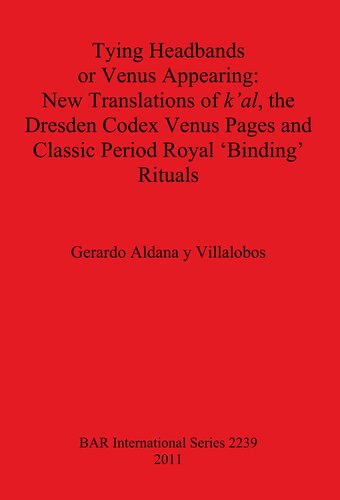

Most ebook files are in PDF format, so you can easily read them using various software such as Foxit Reader or directly on the Google Chrome browser.
Some ebook files are released by publishers in other formats such as .awz, .mobi, .epub, .fb2, etc. You may need to install specific software to read these formats on mobile/PC, such as Calibre.
Please read the tutorial at this link: https://ebookbell.com/faq
We offer FREE conversion to the popular formats you request; however, this may take some time. Therefore, right after payment, please email us, and we will try to provide the service as quickly as possible.
For some exceptional file formats or broken links (if any), please refrain from opening any disputes. Instead, email us first, and we will try to assist within a maximum of 6 hours.
EbookBell Team

4.1
30 reviewsEpigraphers of the Mayan hieroglyphic writing system have demonstrated that a single verb root lies behind a substantial array of royal rituals. At the same time, astronomically oriented studies have found the same root associated with the events of celestial bodies. Perhaps the best known of the latter is the operative verb within the Dresden Codex Venus Pages. This book tackles ostensibly minor incongruities within current interpretations of the Venus Pages to reveal a trajectory that resolves the difference between astronomical and epigraphic treatments of the verb in question. In an attempt to ameliorate these inconsistencies, textual data external to the Dresden Codex, both temporally and geographically, are brought into consideration. The external data reveals an unexpected linguistic and thematic continuity, which further challenges current calendric interpretations of the Venus Pages. Rectifying the calendric inconsistency requires a substantial reinterpretation of the procedure for utilizing the Preface to the Venus Table; in so doing, a new solution to the long enigmatic interval of 9,100 days is proposed. This last move introduces a reconsideration of the Venus Table in its entirety, with a focus on k'al, the operative verb throughout the table, such that we gain access to a perspective of ritual time and space that appears to have been held throughout Mesoamerica. This essay appeals to calendrics, iconography, hieroglyphs, and architecture to suggest that k'al referred to a ritual 'enclosing'or 'loop-tracing' in space and time.